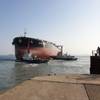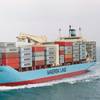BWT: the Cost of Great Lakes Invasive Species Damage
Research project shows invasive species cost the Great Lakes millions of dollars.
Although there has been growing recognition among researchers and policymakers that shipborne invasive species cause a considerable economic toll, this environmental problem often goes unaddressed because of the difficulty in quantifying annual impacts on ecosystem services.
However, a new paper by researchers from the University of Notre Dame, the University of Wyoming and the Technical University of Delft in the Netherlands assigns a dollar figure on the cost to the Great Lakes from invasive species that originate in the ballast water of ocean-going vessels.
David M. Lodge and John D. Rothlisberger of Notre Dame, David C. Finnoff of Wyoming, and Roger M. Cooke of Delft determined that the median estimate of damages is $138 million annually but could be more than $800 million annually.
The researchers used structured expert judgment and economic analysis to determine the figure. They note that the economic analyses employed in their estimate of damages are far more accurate than previous attempts at calculating the damages caused by invasions, yet are probably underestimates for the U.S. side of the Great Lakes basin. Canadian costs were not included.
Using the group’s median value of $138 million, replacing shipping with other modes of transportation might bring net benefits to society in about 30 to 50 years. Using the higher values of damages in the same calculations would suggest that net benefits would occur much sooner.
By converting the impacts into dollar values, the researchers have provided benchmarks that could be used to evaluate the benefits of policy and management choices to reduce the probability of future invasions (for example, stringent requirements for ballast water treatment and inspection on ships).
The researchers’ approach to assessing ecosystem-scale effects of invasive species also provides a template for evaluating policy and management alternatives to prevent, or mitigate, many kinds of environmental damage.













